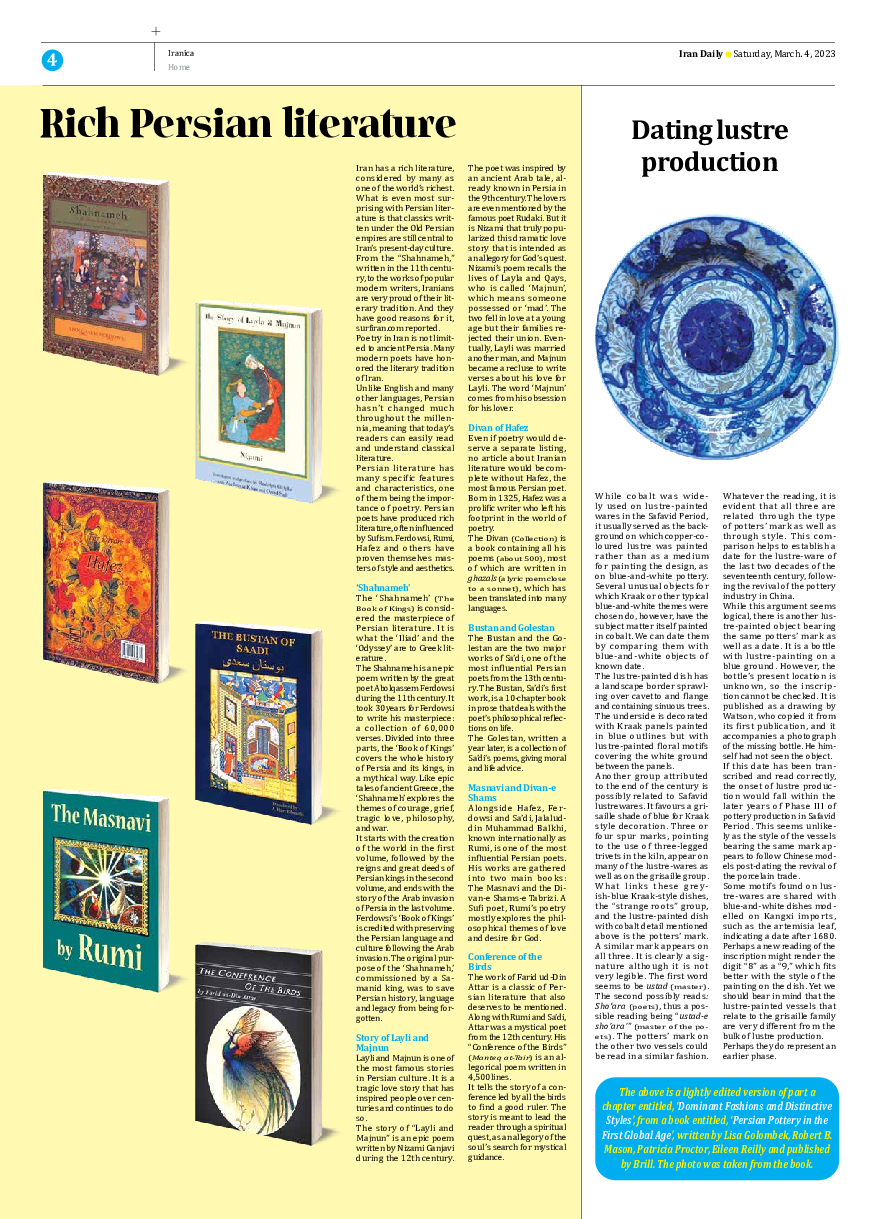
Dating lustre production
While cobalt was widely used on lustre-painted wares in the Safavid Period, it usually served as the background on which copper-coloured lustre was painted rather than as a medium for painting the design, as on blue-and-white pottery. Several unusual objects for which Kraak or other typical blue-and-white themes were chosen do, however, have the subject matter itself painted in cobalt. We can date them by comparing them with blue-and-white objects of known date.
The lustre-painted dish has a landscape border sprawling over cavetto and flange and containing sinuous trees. The underside is decorated with Kraak panels painted in blue outlines but with lustre-painted floral motifs covering the white ground between the panels.
Another group attributed to the end of the century is possibly related to Safavid lustrewares. It favours a grisaille shade of blue for Kraak style decoration. Three or four spur marks, pointing to the use of three-legged trivets in the kiln, appear on many of the lustre-wares as well as on the grisaille group.
What links these greyish-blue Kraak-style dishes, the “strange roots” group, and the lustre-painted dish with cobalt detail mentioned above is the potters’ mark. A similar mark appears on all three. It is clearly a signature although it is not very legible. The first word seems to be ustad (master). The second possibly reads: Shoʿara (poets), thus a possible reading being “ustad-e sho’ara’” (master of the poets). The potters’ mark on the other two vessels could be read in a similar fashion. Whatever the reading, it is evident that all three are related through the type of potters’ mark as well as through style. This comparison helps to establish a date for the lustre-ware of the last two decades of the seventeenth century, following the revival of the pottery industry in China.
While this argument seems logical, there is another lustre-painted object bearing the same potters’ mark as well as a date. It is a bottle with lustre-painting on a blue ground. However, the bottle’s present location is unknown, so the inscription cannot be checked. It is published as a drawing by Watson, who copied it from its first publication, and it accompanies a photograph of the missing bottle. He himself had not seen the object.
If this date has been transcribed and read correctly, the onset of lustre production would fall within the later years of Phase III of pottery production in Safavid Period. This seems unlikely as the style of the vessels bearing the same mark appears to follow Chinese models post-dating the revival of the porcelain trade.
Some motifs found on lustre-wares are shared with blue-and-white dishes modelled on Kangxi imports, such as the artemisia leaf, indicating a date after 1680. Perhaps a new reading of the inscription might render the digit “8” as a “9,” which fits better with the style of the painting on the dish. Yet we should bear in mind that the lustre-painted vessels that relate to the grisaille family are very different from the bulk of lustre production.
Perhaps they do represent an earlier phase.
The above is a lightly edited version of part a chapter entitled, ‘Dominant Fashions and Distinctive Styles’, from a book entitled, ‘Persian Pottery in the First Global Age’, written by Lisa Golombek, Robert B. Mason, Patricia Proctor, Eileen Reilly and published by Brill. The photo was taken from the book.







